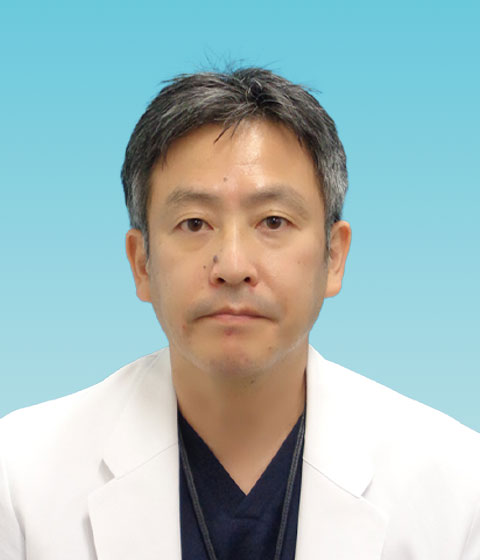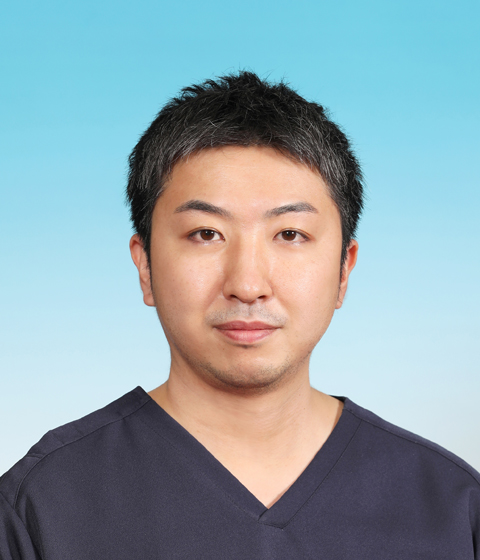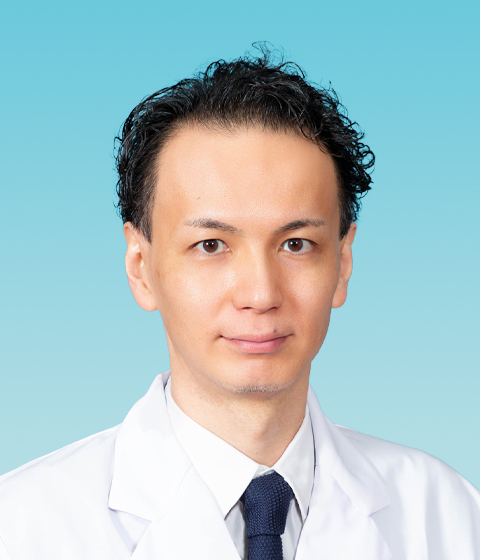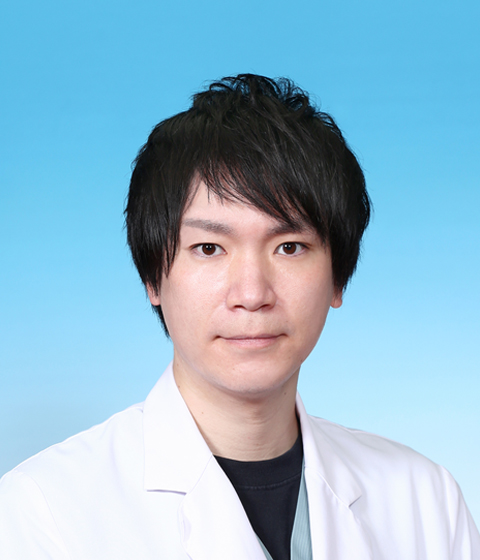![]()
Department of Neuro endovascular Therapy
October 4,2024 Update
Introduction
Our Department of Neuro-endovascular Therapy is a medical department that performs catheter treatment of cerebrovascular vessels. It is a treatment that is positioned between "craniotomy" and "oral treatment", and the staff of the Department of Neurosurgery and the Department of Neurology jointly provide treatment. This is a state-of-the-art catheter treatment center, with the latest equipment, which was established in April 2017.
"The skill of the operator" is important for catheter therapy, but it is also a treatment that is largely influenced by the "latest medical equipment," and the innovation of medical devices is rapidly advancing. In fact, many cerebrovascular diseases (such as cerebral aneurysms and epidural arteriovenous fistula) and cervical vascular diseases (such as carotid artery stenosis) have become able to be cured using catheters. Please contact us if you have a problem with a patient where you found brain vascular disease.
I myself, want to cure the disease with medicine if possible. If it is not possible to cure it with medicine, then I think that it is good if it can be managed by the medicine. We would like to discuss the treatment policy to the extent possible according to the hopes of such patients. However, it may ultimately necessary to operate depending on the kind and the degree of the sickness. In that case, we will support the patient with catheter treatment to avoid "cutting" as much as possible.
Patient care at our department
Cerebrovascular catheter treatment is performed jointly by the Department of Neurosurgery and the Department of Neurology. For this reason, we can provide consultations for treatment in both the Department of Neurosurgery and the Department of Neurology. A specialist outpatient clinic for catheter treatment is open in the Department of Neurosurgery on Thursday mornings (Doctor in charge: Shojima). In the Department of Neurology, we are opening a specialist outpatient clinic for cerebrovascular disorders on Thursday afternoons (Doctor in charge: Dembo). Please contact us at the outpatient Department of Neurosurgery and Department of Neurology for consultation about catheter treatment on days other than these days of the week.
- Cerebral aneurysm
-
- When a cerebral aneurysm ruptures, you get subarachnoid bleeding. Sometimes you may feel ill with a strong headache, or feel ill, lose consciousness and fall. Most patients with a subarachnoid hemorrhage will be brought to the hospital by ambulance. The patient's condition is determined comprehensively, and in addition to information such as the shape and position of the aneurysm, they will determine whether catheter treatment can be performed. Approximately 70% of patients with an aneurysm can be treated with a catheter.
- An aneurysm that is diagnosed in a "brain dock"(medical checkup of the brain by examination with MRI、MRA、etc.) is called an unruptured cerebral aneurysm. It is said that if the size is more than 5 mm then it is better to consider preventive surgery in order to prevent future ruptures, but we will discuss how to deal with this with the patient, taking into account the patient's individual lifestyle and health condition.
- Our hospital is equipped with a state-of-the-art vascular imaging device. We also conduct pre-operative simulations using high definition three-dimensional image diagnosis and "3D printer."
- Dural arteriovenous fistula
- This is a disease where an artery and a vein are directly connected by the strong film (dura mater) which covers the brain. This is not originally a disease of the brain, but it may adversely affect the brain because the veins of the brain and the veins of the dura mater are connected. In addition to the "knowledge", "skill" and "treatment experience," "three-dimensional image diagnosis" with one of the "latest vascular imaging device" is indispensable for treatment. Our responsible physicians have extensive experience in the treatment of dural arteriovenous fistula (about 150 cases).
- Cerebral arteriovenous malformation
- This is an innate cerebrovascular disease where arteries and veins are connected in the brain tissue. A part of the blood vessel might rupture and cause a cerebral hemorrhage. Although this disease cannot be cured with catheter treatment alone, we are very adept at treating by specifying the damaged part of the blood vessel by doing a three-dimensional image diagnosis using virtual reality and stopping the bleeding with a catheter.
- Carotid artery stenosis
- A disease where garbage (plaque) collects in the arteries of the neck around the back of the jaw and the inside of the blood vessel becomes narrow is called carotid artery stenosis. It is currently thought that treatment by medicine is the best, but when the blood vessel has become considerably narrowed or the narrowing progresses, the blood vessel can be expanded by a catheter treatment. It is important to improve lifestyle and treat hypertension and hypercholesterolemia after the catheter treatment, and we will continue to support them after surgery.
- Cerebral infarction
- When the blood vessels of the brain become clogged, the brain cells have a lack of oxygen, and the patient may not be able to move their limbs or they become inarticulate. This disease is called a cerebral infarction. If a narrow blood vessel becomes clogged, it is best to treat it with a drip or a medicine you can swallow, but when a large blood vessel is clogged, the blood vessel can be expanded using a balloon catheter and a stent, because it is not possible to treat it well with medicine alone. In addition, if a blood clot breaks free from the heart to the brain, such as from arrhythmia (atrial fibrillation), a stent-type thrombus removal device or a thrombus-suction catheter can be used to resume flow in the clogged blood vessels.
Main diseases
The following are the diseases and the treatments that can be handled in our department.
- Cerebral aneurysms
- The best treatment for an unruptured cerebral aneurysm is the improvement of lifestyle, including lowering blood pressure and not smoking. First, we will discuss how to improve their lifestyle. However, if the size is large or the shape is distorted and there is a high risk of rupture, we may recommend surgical treatment. Most cerebral aneurysms can be treated with catheter surgery thanks to advances in medical equipment, so please contact us. The physician in charge of our department is the 1 of 40 flow diverter physicians in nation, and 1 of only two in Saitama Prefecture.
- Carotid artery stenosis
- The best treatment for carotid artery stenosis is the improvement of lifestyle, including lowering blood pressure and not smoking. In many cases, it will be sufficient to improve lifestyle and treat with medicine. However, if the blood vessel becomes narrower rapidly, even if the lifestyle is improved, and if it becomes considerably narrow, then surgical treatment will be necessary. Surgical methods include direct surgery with carotid endarterectomy and cervical stent implantation via catheter therapy. Although we determine in advance which treatment is suitable by performing MRI etc., most cases can be handled with catheter treatment, so please talk to us.
- Cerebrovascular obstruction within 8 hours of onset
- It is easy for a clot to form in the heart if there is an arrhythmia such as atrial fibrillation. When a blood clot that has flown from the heart obstructs a blood vessel, half of the body may suddenly stop working or they may not be able to form words. Previously, when the patient had reached such a state, only about 30% were able to recover, but it is now possible for 60% to 80% to recover and be able to walk by performing a catheter treatment and sucking and removing the blood clot. Please call an ambulance immediately if you notice sudden paralysis. If you call the paramedics, they can transport you to a facility like ours that allows us to perform catheter treatment, so feel free to trust the ambulance team.
- Dural arteriovenous fistula
- The strong membrane that wraps around the brain is called the dura mater, and the disease where the arteries and veins that nourish the dura mater are connected is called dural arteriovenous fistula. It is necessary to advance treatment by combining radiation therapy and direct surgery in order to do the treatment, and we have a three-dimensional understanding of the complex vascular construction and develop a patient-specific treatment plan as well as the technique for inducing a catheter into the narrow blood vessels. Please consult with us because this is a disease that requires both a state-of-the-art vascular imaging device and rich treatment experience.
- Cerebral arteriovenous malformation
- The disease where the arteries and veins are connected inside the brain is called cerebral arteriovenous malformation. Either craniotomy or radiation therapy treatment will be necessary in order to fully cure this disease. Catheter treatment is done to assist these treatments. For example, it is possible to cure a cerebral arteriovenous malformation by radiotherapy without craniotomy, especially if you find a place where it seems to be easy to rapture and if you treat that part with a catheter.
Target Symptoms
- Patients who can receive catheter treatment at our Department of Neuro-endovascular Therapy are mostly, (1) People brought to the hospital by ambulance with symptoms such as sudden consciousness disorder or paralysis, or (2) People who visit us because cerebrovascular disease was found by accident without any symptoms during a medical checkup of the brain. For this reason, there may be no specific symptoms in patients who are subject to catheter treatment.
- Many cerebrovascular diseases such as cerebral aneurysms, epidural arteriovenous fistulas, and carotid artery stenosis have come to be treated with catheters. Please come to consult about whether catheter treatment is necessary and whether it is possible if you find a disease in the blood vessels of the brain or the neck.
Treatment results
| Disease name | Number of cases |
|---|---|
| Total number | 72cases |
| Cerebral aneurysm coil embolization | 32cases |
| Stent implantation for carotid stenosis/occlusion | 7cases |
| Dural arteriovenous fistula embolization | 5cases |
| Cerebral arteriovenous malformation embolization | 6cases |
| Cerebral artery stenosis vasodilation | 10cases |
| Acute cerebral infarction (catheter clot removal) | 5cases |
| Intracranial tumor embolization | 1cases |
| Embolization for traumatic vertebral artery injury | 5cases |
Medical staff
| Name | Job Title | Position | Specialized Field | Credentials |
|---|---|---|---|---|
| 飯星 智史 (Iihoshi Satoshi)  |
Professor (Department of Neurosurgery) |
Cerebrovascular disease Aneurysm Dural arteriovenous fistula Arteriovenous malformation Endovascular theraphy |
Board-Certified Neurosurgeon
(the Japan Neurosurgical Society) Board-Certified Doctor Japanese Society for Neuroendovascular Therapy Board-Certified Doctor The Japan Stroke Society |
|
| 傳法 倫久 (Dempo Tomohisa) 
|
Associate Professor (Department of Neurology) |
Vice-Chief of Research Manager of the ward Manager of General Affairs |
Cerebrovascular disorders neuroendovascular treatment diagnostic imaging of acute ischemic stroke |
JBoard Certified Neurologist/Senior Fellow of the Japanese Society of Neurology Board Certified trainer/fellow of Japan Stroke Society Specialist,Japanese Society for Neuroendovascular Therapy |
| 齊藤 徹 (Saitou Akira)  |
Instructor (Department of Neurosurgery) |
Cerebrovascular disorders Cerebral aneurysms Carotid artery stenosis Moyamoya disease Acute cerebral ischemia |
Board-Certified Neurosurgeon (the Japan Neurosurgical Society) Japanese Society for Neuroendovascular Therapy Certified Doctor The Japan Stroke Society Certified Doctor |
|
| 笠倉 至言 (Kasakura Shigen) 
|
AInstructor (Department of Neurosurgery) |
Cerebrovascular disease Aneurysm Dural arteriovenous fistula Arteriovenous malformation Endovascular theraphy |
Board-Certified Doctor Japanese Society for Neuroendovascular Therapy Board-Certified Doctor The Japan Stroke Society |
|
| 轟 和典 (Todoroki Kazunori) 
|
Instructor (Department of Neurosurgery) |
Neurosurgery general | Board-Certified Neurosurgeon (the Japan Neurosurgical Society) Japanese Society for Neuroendovascular Therapy Certified Doctor |
Outpatient clinic
| Department of Neuro endovascular Therapy | ||||||
| 月曜日 Monday |
火曜日 Tuesday |
水曜日 Wednesday |
木曜日 Thursday |
金曜日 Friday |
土曜日 Saturday |
|
| 午前 | ||||||
| 浄化ユニット |
腎・高血圧内科 担当医 |
腎・高血圧内科 担当医 |
腎・高血圧内科 担当医 |
腎・高血圧内科 担当医 |
腎・高血圧内科 担当医 |
腎・高血圧内科 担当医 |
| 専門外来 |
腹膜透析 清水 泰輔 (Shimizu Taisuke) |
腹膜透析 山本 亮 (Yamamoto Ryo) |
腹膜透析・在宅血液透析 小川 智也 (Ogawa Tomonari) |
腹膜透析・在宅血液透析 小川 智也 (Ogawa Tomonari) (2.4週) |
透析アクセス 清水 泰輔 (Shimizu Taisuke) |
腎移植登録 (当番制) |
| 腎移植 浜田 隆行 (Hamada Takayuki) (4週) |
透析アクセス 小川 智也 (Ogawa Tomonari) (1.3週) |
|||||
| 腎移植 岩下 山連 (Iwashita Takatsugu) |
||||||
| 午後 | ||||||
| 浄化ユニット |
腎・高血圧内科 担当医 |
腎・高血圧内科 担当医 |
腎・高血圧内科 担当医 |
腎・高血圧内科 担当医 |
腎・高血圧内科 担当医 |
腎・高血圧内科 担当医 |
| 専門外来 |
安部 望 (Abe Nozomi) |
透析アクセス 小川 智也 (Ogawa Tomonari) |
透析アクセス 東原 宜之 (Tohara Nobuyuki) 瀬尾 明彦 (Seo Akihiko) |
|||
| 透析アクセス 肥田 徹 (Hida Toru) 佐野 達郎 (Sano Tatsuro) 金子 修 (Kaneko Osamu) |
||||||
| 教育外来 |
腎不全療法 |
腎不全療法 |
腎不全療法 |
腎不全療法 |
腎不全療法 |
|
To the Medical Institutions
To the Regional Medical Institutions
Please contact us regarding emergency patients where a stroke is suspected and who are within eight hours of onset. We will respond quickly. Also,
- Unruptured cerebral aneurysms
- Carotid artery stenosis/carotid artery obstructions
- Dural arteriovenous fistula
- Cerebral arteriovenous malformation
- Other, diseases of the blood vessels from the neck up
Please feel free to refer patients who are concerned about vascular lesions such as in the face, in addition to the skull and neck.
You can come to the clinic on Thursday mornings, but we respond on the phone as needed (Department of Neurosurgery: 043-228-3655). In addition to the usual examinations (three-dimensional CT, MRI, and cerebral vascular imaging), we can also create a three-dimensional image and a blood flow simulation on a workstation.
To medical students and residents
We are looking forward to training physicians who aspire to be experts in cerebrovascular treatment (catheter treatment).
Surgery will not be the first class "simply because of the large number of experiences." We aim for the development of catheter treatment physicians who can perform the procedure after firmly understanding why such an operation is done for each procedure.
In addition, cerebrovascular treatment is inseparable from the development of the latest medical equipment. We are carrying out medicine-engineering cooperative research projects with various universities. Please come and experience the latest research and development during the training.




